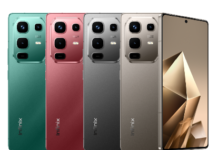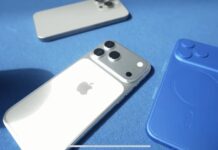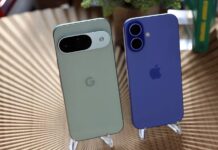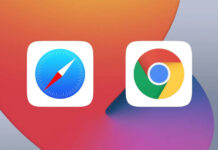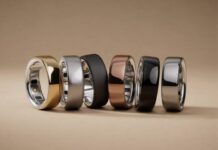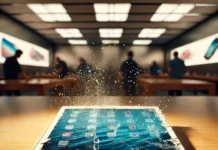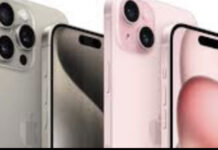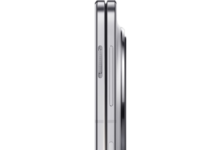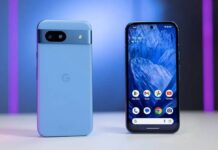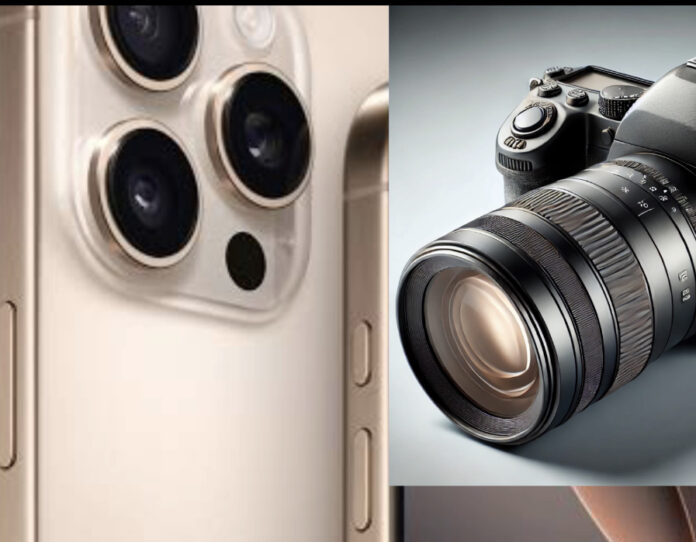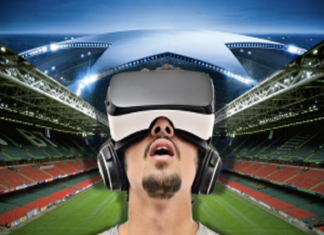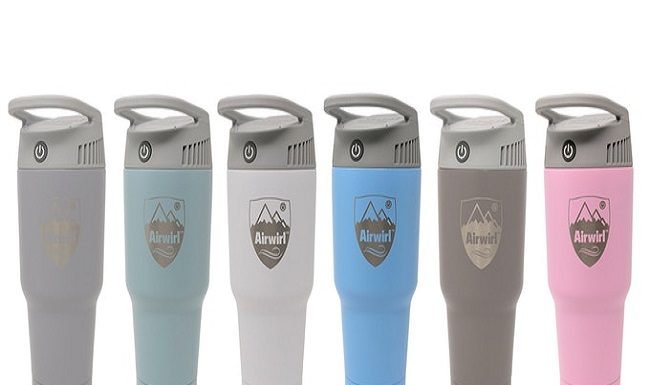The evolution of the iPhone’s camera system is one of the most significant technological advancements in the smartphone industry. Since the first iPhone was released in 2007, Apple has consistently improved its cameras, adding more megapixels, enhanced software features, and advanced lenses. With every new release, the iPhone camera system has made strides in both image and video quality, transforming from a basic point-and-shoot camera to a sophisticated photography tool that some argue is becoming a viable alternative to professional cameras, including DSLRs (Digital Single-Lens Reflex cameras).
But can an iPhone truly replace a DSLR, a tool that has long been the standard for professional photographers? Let’s find out as we progress in this article
The Evolution of iPhone Cameras
2007: The Original iPhone
The original iPhone, released in 2007, featured a 2-megapixel camera with no flash, zoom, or video recording capability. At the time, this was relatively standard for a mobile phone, but the iPhone’s seamless integration with iOS made capturing and sharing photos much easier than ever before. Still, it was far from competing with DSLRs or even point-and-shoot digital cameras.
2010: iPhone 4 – The Introduction of HD Video
The iPhone 4, launched in 2010, marked a significant leap forward in the iPhone’s camera capabilities. It introduced a 5-megapixel rear camera with an LED flash and was the first iPhone capable of recording 720p HD video. Additionally, the front-facing camera was added, mainly for video calls via FaceTime. This model began to show Apple’s focus on improving the camera experience for everyday users.
2014: iPhone 6 – Bigger Sensors, Faster Autofocus
In 2014, the iPhone 6 and 6 Plus arrived with an 8-megapixel camera and introduced Focus Pixels technology, which dramatically improved autofocus speed. The larger 1.5µm pixels and an f/2.2 aperture also allowed more light to enter the sensor, improving low-light performance. The iPhone 6 Plus introduced optical image stabilization (OIS), a feature that reduced blur in low-light images and shaky video footage, further elevating its video capabilities.
2016: iPhone 7 Plus – Dual-Camera System
The iPhone 7 Plus in 2016 was a landmark in the evolution of the iPhone camera system as it introduced a dual-camera system. The phone had a standard wide-angle lens and a telephoto lens, allowing for 2x optical zoom and a new Portrait Mode that created a shallow depth-of-field effect, mimicking the background blur (bokeh) typical of DSLR cameras. This was Apple’s first major push into competing with DSLR-like features.
2019: iPhone 11 Pro – Triple-Camera System and Night Mode
The introduction of the iPhone 11 Pro in 2019 marked another massive leap with its triple-camera system (wide, ultra-wide, and telephoto). This setup allowed for more versatile shooting, including wide landscape shots and enhanced zoom. One of the most significant features was the introduction of Night Mode, which used computational photography to drastically improve low-light photos without a flash. The iPhone 11 Pro also featured Deep Fusion, a technology that combined multiple exposures for sharper images, further narrowing the gap between smartphone cameras and DSLRs.
2021: iPhone 13 Pro – ProRAW and Cinematic Mode
By the time the iPhone 13 Pro launched in 2021, the camera had reached a point where even professional photographers and filmmakers began to take notice. The addition of Apple ProRAW gave photographers more control over the final image by providing more data to work with in post-processing, akin to RAW files on DSLRs. The Cinematic Mode for video recording, which mimicked rack focusing (changing focus from one subject to another), gave users a tool traditionally reserved for high-end cameras used in filmmaking.
2023: iPhone 15 Pro – 48MP Main Camera and Enhanced Zoom
In 2023, the iPhone 15 Pro series introduced a 48-megapixel main camera with an improved sensor that captures incredible detail, even in challenging lighting conditions. The tetra-binning technology allows the camera to group pixels for a high-resolution image or combine them for better low-light performance. The iPhone 15 Pro Max also offers a 5x optical zoom—a new high for iPhones—allowing for greater versatility in shooting at a distance without loss of image quality.
2024: iPhone 16 Pro & Pro Max – In addition to the Fusion camera alongside the features in the previous iPhone 15 Pro series , Apple has also introduced Camera Control, a new, intuitive way to interact with the camera system. Users can now tap into the camera’s advanced visual intelligence with ease, allowing for more seamless control over settings like exposure, focus, and lighting. This enhanced interface gives both amateur and professional photographers the tools they need to unlock their creativity without complicated adjustments.
How Does the iPhone Camera Compare to DSLRs?
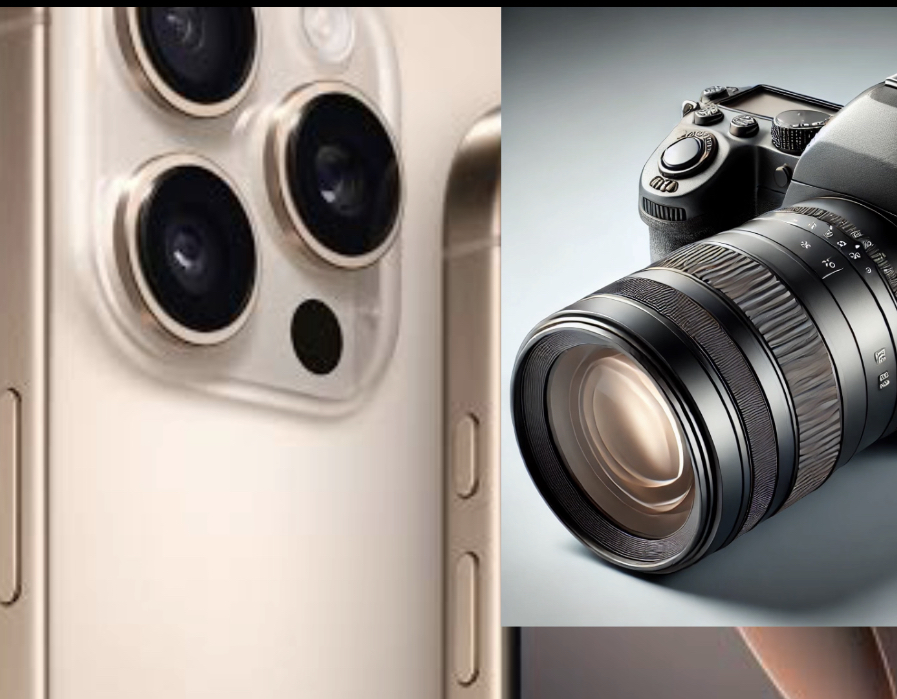
While the iPhone camera has improved dramatically, how does it stack up against the DSLRs that professionals use? Let’s look at several key areas:
1. Image Quality
DSLRs have long been known for their superior image quality, thanks to larger sensors, interchangeable lenses, and greater manual control over exposure settings. However, iPhones have made up a lot of ground. The 48MP sensor in the iPhone 15 Pro can capture incredibly sharp images, and features like Deep Fusion, Night Mode, and Smart HDR use computational photography to enhance images in ways that DSLRs can’t.
That said, DSLRs still hold the edge when it comes to sheer sensor size and optical capabilities, which results in better low-light performance and more detailed images in certain scenarios.
2. Lens Versatility
DSLRs allow photographers to switch lenses depending on the situation, from wide-angle to telephoto to macro lenses. This versatility is unmatched by smartphones, though Apple has worked hard to bridge this gap. The iPhone’s triple-camera system gives users wide, ultra-wide, and telephoto options, and the ability to use digital zoom with software enhancements to simulate the effect of multiple lenses.
However, the physical limitations of smartphone design mean iPhones can’t compete with the optical versatility of DSLRs, especially for specialized tasks like wildlife photography or extreme close-ups.
3. Portability
One area where the iPhone has a clear advantage is portability. Even with the best DSLR camera, users have to carry around the body, multiple lenses, and accessories like tripods. The iPhone, on the other hand, fits in your pocket and is always with you, making it perfect for capturing spontaneous moments. For many users, especially those who aren’t professional photographers, the iPhone’s portability is a huge selling point.
4. Ease of Use
The iPhone is designed to be easy to use, with automatic settings that allow even novice photographers to take great pictures. The built-in software, such as Portrait Mode and Cinematic Mode, automatically handles complex tasks like adjusting the depth of field or optimizing settings for low-light conditions. DSLRs, by contrast, often require more knowledge of manual settings like ISO, aperture, and shutter speed, which can be intimidating for beginners.
5. Video Capabilities
Video is another area where the iPhone excels. The iPhone 15 Pro’s ProRes video recording, Cinematic Mode, and Dolby Vision HDR make it capable of shooting high-quality video that is on par with some professional video cameras. DSLRs can capture excellent video as well, but the iPhone’s ease of use, built-in stabilization, and editing tools give it an edge for casual videographers and content creators.
Are iPhone cameras Replacing DSLRs?
While iPhones have become more powerful photography and video tools, whether they can truly replace DSLRs depends on the user and their needs.
For Professional Photographers:
For professional photographers who require ultimate control over their shots, use multiple lenses, and work in specialized fields like sports, wildlife, or studio photography, DSLRs are still the preferred choice. The versatility, manual controls, and sheer image quality of DSLRs are hard to match. However, many professionals are finding that iPhones are excellent secondary tools. They are using iPhones for quick, on-the-go shots, behind-the-scenes content, or even for creative projects where portability and ease of use are more important than raw image quality.
For Enthusiasts and Casual Photographers:
For everyday users and even photography enthusiasts, the iPhone has become a compelling option. The quality of the iPhone’s cameras is now more than enough for most casual photography needs. The combination of computational photography, ease of use, and the fact that it’s always with you makes it a great tool for everyday shooting, travel, and social media.
For Videographers and Content Creators:
For videographers and content creators, the iPhone’s video capabilities are particularly appealing. With features like ProRes, Cinematic Mode, and Dolby Vision HDR, the iPhone is a versatile tool for shooting high-quality content, whether for YouTube, Instagram, or even professional projects.
